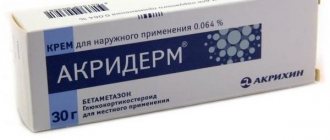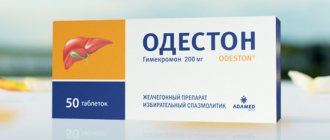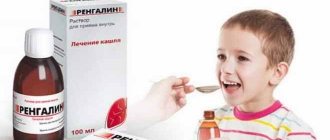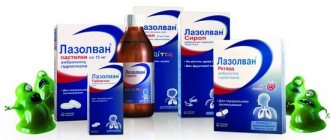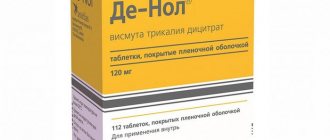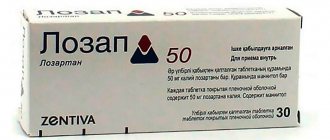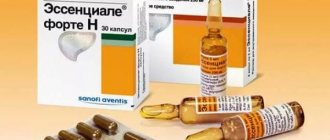Phenazepam is a strong medication that can have a pronounced effect on the human psyche. It belongs to the pharmacological group of tranquilizers and is capable of causing hypnotic, muscle relaxant and antiepileptic effects. This drug should be prescribed only under the supervision of a physician of the appropriate specialty, as there is a risk of complications and adverse reactions in response to its use. If for some reason the drug Phenazepam is not suitable for you, analogues for selecting and prescribing a new treatment regimen should only be selected together with the treating doctor, who is well acquainted with the features of the clinical case. Never self-medicate, because an incorrectly selected pharmaceutical drug or dosage can cause irreparable harm to your health.
Indications for use
Phenazepam is one of the most potent tranquilizers of the benzodiazepine group.
Phenazepam is used in the treatment of various diseases of the nervous system and chronic mental disorders. Prescribed for:
- neurotic and psychopathic disorders, accompanied by fear, increased anxiety and restlessness, irritability, emotional lability (sudden causeless mood swings);
- nervous breakdowns;
- reactive psychosis;
- panic state;
- insomnia, other sleep disorders;
- alcohol withdrawal (a condition that occurs with alcoholism of the 2nd or 3rd degree as a result of a sudden cessation of alcohol consumption);
- some disorders of the autonomic nervous system;
- muscle rigidity, tics and hyperkinesis;
- some types of epilepsy (as an anticonvulsant);
- certain forms of schizophrenia.
In short courses, a tranquilizer can be prescribed to prevent acute emotional stress (unfortune in the family, death of a loved one). Phenazepam is used for a long time mainly in the treatment of chronic mental pathologies.
Phenazepam may be administered to the patient on the eve of surgery to prepare for general anesthesia and to prevent seizures that may occur during surgery.
What is it used for?
This medication is used in the treatment of many diseases. It is one of the most powerful benzodiazepines with a pronounced antidepressant effect. In addition to treating phobias, anxiety and psychosis, this medicine is indicated for the following pathologies:
- neurosis-like and neurotic disorders;
- psychopathic conditions;
- convulsions;
- depression;
- hypochondria;
- vegetative-vascular dystonia;
- excessive muscle tone, in which they cannot relax (muscle spasm);
- nervous tics, etc.
In addition, the medication is successfully used in the treatment of schizophrenia, substance abuse, alcoholism, hangover and in preparing patients for anesthesia.
Compound
Phenazepam is available in two dosage forms. This:
- tablets for internal use (10, 25 or 50 tablets per package);
- 0.1% solution for intramuscular/intravenous injection (package contains 10 ampoules of 1 ml).
The tablets contain the main active ingredient bromodihydrophenylbenzodiazepine in a dose of 0.5 mg, 1 mg or 2.5 mg and auxiliary components - lactose monohydrate (milk sugar), calcium stearate, croscarmellose sodium, potato starch.
1 ml of injection solution contains 1 mg of bromodihydrochlorophenylbenzodiazepine. As auxiliary compounds - polysorbate 80, distilled glycerin, sodium hydrosulfite and hydroxide, povidone, water for injection.
Features of application
With caution: Hepatic and/or renal failure, cerebral and spinal ataxia, history of drug dependence, tendency to abuse psychoactive drugs, hyperkinesis, organic brain diseases, psychosis (paradoxical reactions are possible), hypoproteinemia, sleep apnea (established or suspected) , elderly age. In case of renal/liver failure and long-term treatment, monitoring of the peripheral blood picture and liver enzymes is necessary. The frequency and nature of side effects depend on individual sensitivity, dose and duration of treatment
When reducing doses or stopping taking Tranquesipam, side effects disappear. Like other benzodiazepines, it has the ability to cause drug dependence when taken long-term in large doses (more than 4 mg/day). Use immediately before or during childbirth can cause respiratory depression in the newborn, decreased muscle tone, decreased blood pressure, hypothermia and weak act. sucking ("flaccid baby" syndrome). The drug enhances the effect of alcohol, so drinking alcohol during treatment with Tranquesipam is contraindicated. The drug is contraindicated during work for transport drivers and other persons performing work that requires speed of psychomotor reactions and precise movements.
In case of renal/liver failure and long-term treatment, monitoring of peripheral blood patterns and liver enzymes is necessary. The frequency and nature of side effects depend on individual sensitivity, dose and duration of treatment. When reducing doses or stopping taking Tranquesipam, side effects disappear. Like other benzodiazepines, it has the ability to cause drug dependence when taken long-term in large doses (more than 4 mg/day). Use immediately before or during childbirth can cause respiratory depression in the newborn, decreased muscle tone, decreased blood pressure, hypothermia and weak act. sucking ("flaccid baby" syndrome). The drug enhances the effect of alcohol, so drinking alcohol during treatment with Tranquesipam is contraindicated. The drug is contraindicated during work for transport drivers and other persons performing work that requires speed of psychomotor reactions and precise movements. .
Impact on the ability to drive vehicles. Wed and fur.:
The drug is contraindicated during work for transport drivers and other persons performing work that requires speed of psychomotor reactions and precise movements.
pharmachologic effect
Phenazepam is a psychotropic drug that depresses the central nervous system. The main pharmacological effects of Phenazepam:
- anxiolytic (eliminates emotional stress, anxiety, fear and worry);
- sedative (reduces the severity of symptoms of neurotic origin);
- sleeping pills (reduces time to fall asleep, improves sleep quality);
- central muscle relaxant (slows down the transmission of nerve impulses, resulting in relaxation of smooth muscle tissue, but can also have a direct inhibitory effect on motor nerves and muscle function);
- anticonvulsant (suppresses the spread of the convulsive impulse, but does not relieve the excitation of the focus).
The active component is quickly absorbed: the tablets begin to act within half an hour after administration, and after 1–2 hours the concentration of bromodihydrophenylbenzodiazepine in the blood plasma reaches its maximum values. The half-life (time for the maximum concentration to halve) ranges from 6–10 to 18 hours.
The duration of action of Phenazepam is influenced by the state of the nervous system, the dosage of the drug and the form of release - when administered as an injection solution, the effect occurs faster, but lasts less.
Pharmacodynamics
Provided in the Pharmacodynamics Tranquesipam
the information is based on data about another medicine with exactly the same composition as the medicine
Tranquesipam
(Bromdihydrochlorphenylbenzodiazepine).
Be careful and be sure to check the information on the Pharmacodynamics
in the instructions for the drug
Tranquesipam
directly from the package or from the pharmacist at the pharmacy. more…closeDragee; Solution for intravenous and intramuscular administration; Substance-powderTablets
Anxiolytic drug (tranquilizer) of the benzodiazepine series. It has anxiolytic, sedative-hypnotic, anticonvulsant and central muscle relaxant effects.
Strengthens the inhibitory effect of GABA on the transmission of nerve impulses. Stimulates benzodiazepine receptors located in the allosteric center of postsynaptic GABA receptors of the ascending activating reticular formation of the brain stem; reduces the excitability of subcortical structures of the brain (limbic system, thalamus, hypothalamus), inhibits polysynaptic spinal reflexes.
The anxiolytic effect is due to the influence on the amygdala complex of the limbic system and manifests itself in a decrease in emotional stress, easing anxiety, fear, and restlessness.
The sedative effect is due to the influence on the reticular formation of the brain stem and nonspecific nuclei of the thalamus and is manifested by a decrease in symptoms of neurotic origin (anxiety, fear).
The productive symptoms of psychotic origin (acute delusional, hallucinatory, affective disorders) are practically not affected; a decrease in affective tension and delusional disorders is rarely observed.
The hypnotic effect is associated with inhibition of the cells of the reticular formation of the brain stem. Reduces the effect of emotional, vegetative and motor stimuli that disrupt the mechanism of falling asleep.
The anticonvulsant effect is realized by enhancing presynaptic inhibition, suppresses the propagation of the convulsive impulse, but does not eliminate the excited state of the focus.
The central muscle relaxant effect is due to inhibition of polysynaptic spinal afferent inhibitory pathways (to a lesser extent, monosynaptic ones). Direct inhibition of motor nerves and muscle function is also possible.
Strengthens the inhibitory effect of GABA on the transmission of nerve impulses. Stimulates benzodiazepine receptors located in the allosteric center of postsynaptic GABA receptors of the ascending activating reticular formation of the brain stem and interneurons of the lateral horns of the spinal cord; reduces the excitability of subcortical structures of the brain (limbic system, thalamus, hypothalamus), inhibits polysynaptic spinal reflexes.
The anxiolytic effect is due to the influence on the amygdala complex of the limbic system and manifests itself in a decrease in emotional stress, easing anxiety, fear, and restlessness.
The sedative effect is due to the influence on the reticular formation of the brain stem and nonspecific nuclei of the thalamus and is manifested by a decrease in symptoms of neurotic origin (anxiety, fear).
The productive symptoms of psychotic origin (acute delusional, hallucinatory, affective disorders) are practically not affected; a decrease in affective tension and delusional disorders is rarely observed.
The hypnotic effect is associated with inhibition of the cells of the reticular formation of the brain stem. Reduces the impact of emotional, vegetative and motor stimuli that disrupt the mechanism of falling asleep.
The anticonvulsant effect is realized by enhancing presynaptic inhibition, suppresses the propagation of the convulsive impulse, but does not relieve the excited state of the focus.
The central muscle relaxant effect is due to inhibition of polysynaptic spinal afferent inhibitory pathways (to a lesser extent, monosynaptic ones). Direct inhibition of motor nerves and muscle function is also possible.
Contraindications
Contraindications to the use of Phenazepam are:
- closed-angle glaucoma (taking Phenazepam can provoke irreversible complete loss of vision);
- myasthenia gravis (a neuromuscular disease characterized by pathologically rapid fatigue of skeletal muscles);
- shock;
- coma;
- acute poisoning with drugs, alcohol, sleeping pills;
- severe forms of chronic obstructive pulmonary disease and other diseases accompanied by acute respiratory failure;
- severe depression with suicidal tendencies;
- hypersensitivity to the main or auxiliary components of the drug, other benzodiazepine drugs;
- age under 18 years;
- pregnancy (especially early stages), breastfeeding.
Phenazepam is prescribed with caution for:
- renal failure;
- liver failure;
- ataxia (impaired coordination of movements of various muscle groups in the absence of muscle weakness);
- tendency to drug addiction;
- apnea syndrome;
- organic pathologies of the brain (tumors, previous operations);
- hypoproteinemia (low protein in the blood);
- sensory disturbances or motor function disorders;
- acute psychosis.
During the period of therapy, you should not drive vehicles or other devices or perform dangerous work, since while taking a tranquilizer, concentration deteriorates and reactions slow down.
During pregnancy and breastfeeding
In the first three months of pregnancy, taking Phenazepam is prohibited, since the active component penetrates the placenta and has a toxic effect on the fetus, which can lead to the formation of severe birth defects.
It is allowed to take Phenazepam in the second and third trimesters, but only for health reasons and under strict medical supervision. Long-term use of the drug by a pregnant woman can lead to the development of drug dependence in the fetus. And taking a tranquilizer shortly before birth can cause severe depression in the newborn’s central nervous system, respiratory function and cardiac activity.
Side effects
Phenazepam, as a benzodiazepine tranquilizer, often causes side effects. The most common are drowsiness, fatigue, and depression of the central nervous system. Possible impairment of cognitive functions, unsteady gait, decreased concentration, and speech-motor disorders. Very rarely the opposite effect occurs - agitation, attacks of aggression, agitation, suicidal attempts.
Side effects such as hypotension and decreased heart rate are considered normal. Sometimes visual disturbances, double vision, and flickering of spots occur. In some patients, phenazepam inhibits the hematopoietic system, leading to a decrease in the content of all blood cells - pancytopenia.
Quite often, at the beginning of therapy, digestive system disorders occur - heartburn, nausea, vomiting, abdominal pain, diarrhea, jaundice. Some patients experience urinary disorders, and almost all have decreased libido.
Mode of application
The regimen of use (dosage and frequency of administration) is established by the doctor, taking into account the underlying disease, age and the presence of concomitant pathologies in the patient.
- For insomnia and sleep disorders, Phenazepam is recommended to be taken in a minimum dose (0.25–0.5 mg) half an hour before bedtime.
- The initial standard dose for the treatment of neurotic and psychopathic disorders is 0.5–1 mg 2–3 times a day for 2–4 days. Then, if Phenazepam is well tolerated, the dose can be increased to 4–6 mg.
- To eliminate severe fear, anxiety, anxiety, 3 mg per day is prescribed, and the dosage is increased over several days until a positive therapeutic effect is achieved.
- For epilepsy, they can prescribe from 2 mg to 10 mg per day.
- To relieve alcohol withdrawal, it is recommended to take 2 mg to 5 mg of Phenazepam per day.
- In the treatment of neurological disorders accompanied by increased muscle tone, standard doses are 2–3 mg once or twice a day.
The maximum daily dosage of Phenazepam should not exceed 10 mg.
To prevent addiction and drug dependence, the drug is prescribed in short courses - no longer than two weeks. In rare cases (for chronic mental disorders), the course can be extended to two months. To discontinue the drug, a gradual dose reduction is necessary.
Phenazepam injection solution is used in hospitals only during exacerbation of a severe mental disorder, since the risk of adverse reactions and overdose symptoms when administered by injection is higher than when taking tablets.
Therapeutic indications
Provided in the section Therapeutic indications of Tranquesipam
the information is based on data about another medicine with exactly the same composition as the medicine
Tranquesipam
(Bromdihydrochlorphenylbenzodiazepine).
Be careful and be sure to check the information in the Therapeutic indications
of the instructions for the drug
Tranquesipam
directly from the package or from the pharmacist at the pharmacy. more…closeDragee; Solution for intravenous and intramuscular administration; Substance-powderTablets
neurotic, neurosis-like, psychopathic, psychopath-like and other conditions accompanied by anxiety, fear, increased irritability, tension, emotional lability;
reactive psychoses and hypochondriacal-senestopathic syndrome (including those resistant to the action of other tranquilizers);
autonomic dysfunctions and sleep disorders;
prevention of states of fear and emotional stress;
temporal and myoclonic epilepsy (as an anticonvulsant);
treatment of hyperkinesis and tics, muscle rigidity, autonomic lability.
neurotic, neurosis-like, psychopathic and psychopath-like and other conditions (irritability, anxiety, nervous tension, emotional lability);
reactive psychosis and senestopathic-hypochondriacal disorders (including those resistant to the action of other anxiolytic drugs (tranquilizers);
autonomic dysfunctions and sleep disorders;
prevention of states of fear and emotional stress;
as an anticonvulsant - temporal and myoclonic epilepsy;
in neurological practice - hyperkinesis, tics, muscle rigidity, autonomic lability.
Side effects
Phenazepam is a potent drug that affects various structures of the brain. This explains the possibility of developing unwanted side effects from the nervous and other systems of the body.
The negative effect of Phenazepam on the nervous system is manifested:
- severe daytime sleepiness, fatigue, dizziness, loss of coordination and unsteadiness of gait (especially common in elderly patients);
- decreased concentration, speed of mental and motor reactions;
- confusion, memory impairment;
- headaches;
- depression, low mood;
- tremor;
- muscle weakness;
- epileptic seizure (in patients suffering from epilepsy).
Malfunctions of the digestive system during treatment with Phenazepam are accompanied by:
- dry mouth or, conversely, increased salivation;
- loss of appetite;
- heartburn, nausea, vomiting;
- digestive disorders (diarrhea, constipation);
- liver dysfunction (increased activity of liver enzymes, jaundice).
From the genitourinary system, Phenazepam causes:
- urinary retention;
- urinary incontinence;
- dysmenorrhea (menstrual irregularities in women);
- renal dysfunction.
Some patients experience the following after taking sleeping pills:
- decreased blood pressure;
- visual impairment (double vision, blurry images);
- tachycardia;
- weight loss;
- allergic reactions (redness and itching of the skin, rashes).
Effect on the nervous system
The drug has a strong effect on the central nervous system and can cause various, and in some cases opposite, effects:
- euphoria;
- increased mood;
- aggressiveness;
- fits of rage.
At the initial stages of treatment with Phenazepam, the patient may experience high spirits, but with long-term continuous use of the tablets, the emotional mood worsens, anger, nervousness, and aggression appear. That is, paradoxical reactions develop that are opposite to the main effect of the drug. Possible severe agitation, an attack of psychosis. If such symptoms appear, you should stop taking sleeping pills.
addictive
One of the serious adverse reactions of Phenazepam is addiction, which can develop even if the dosage regimen is followed. And after long-term treatment with the drug, a strong dependence occurs, accompanied by severe nervous disorders.
When the dosage is sharply reduced or the tranquilizer is stopped, withdrawal syndrome occurs. In this case, the patient notes:
- sleep disturbance;
- nervousness, irritability;
- muscle spasms (smooth muscles of internal organs and skeletal muscles);
- increased sweating;
- depression;
- tremor;
- perception disorders;
- photophobia;
- tachycardia;
- convulsions;
- acute psychosis (in rare cases).
Overdose
Exceeding the doses prescribed by the doctor leads to severe intoxication of the body, accompanied by severe depression of consciousness, cardiac and respiratory activity. There is a high risk of coma, death, which can be caused by cardiac or respiratory arrest caused by the drug.
Main symptoms of overdose:
- severe drowsiness;
- confusion, disorientation;
- weakening of motor reflexes;
- prolonged dysarthria (speech function disorder);
- nystagmus (involuntary rapid movements of the pupils);
- tremor (trembling of limbs);
- depression of the heartbeat (the strength and frequency of heart contractions decreases);
- lowering blood pressure;
- shortness of breath, difficulty breathing.
If symptoms of intoxication occur, you need to perform a gastric lavage, take sorbent (activated carbon), and seek emergency medical help. In inpatient settings, drugs are prescribed that support the functions of the cardiac and respiratory systems, other means of symptomatic therapy, and a specific antidote to Phenazepam is administered - Flumazenil or Anexat.
Effect of medication in case of overdose
Phenazepam is a drug that, when the dosage is exceeded or used with alcohol and other heavy drugs, causes a pronounced overdose clinic. With a moderate form, a superficial coma occurs, and with a severe overdose, a deep coma occurs. And 10 mg of bromodihydrochlorophenylbenzodiazepine is already deadly for humans.
Also, an overdose of Phenazepam leads to the development of the following symptoms:
- drowsiness and fatigue
- limb tremors
- convulsions
- chills and hot flashes
- slowing down the heart rate
- impaired motor coordination
- loss of orientation in space
- blood pressure surge
- feeling of suffocation and slow breathing
- nausea, vomiting
Drug interactions
When taking Phenazepam simultaneously with drugs from other groups, the active ingredients may interact chemically. The result of the reaction is a change in the effectiveness of drugs and worsening side effects.
When taken simultaneously with Phenazepam:
- the toxic effects of Zidovudine (an antiviral drug used in complex therapy for HIV), MAO inhibitors, and Imipramine are enhanced;
- the effectiveness of Levodopa decreases;
- the therapeutic effect of Phenazepam and sleeping pills, antiepileptic drugs, narcotic analgesics, muscle relaxants is mutually enhanced;
- the effect of antihypertensive drugs is enhanced;
- the inhibitory effect of Clozapine on respiratory function increases, which can cause respiratory arrest.
With alcohol
Taking Phenazepam simultaneously with alcoholic drinks leads to a decrease in the effectiveness of the drug, an increase in its toxic effect, and the development of overdose symptoms. Phenazepam depresses respiration and cardiac activity. In combination with alcohol, the depressant effect is enhanced, which is dangerous not only for the health, but also for the life of the patient.
Reviews
- Elena, 35 years old. Several years ago I began to notice that I was having certain problems with sleep. Over time, my insomnia began to get worse and I had to see a doctor. At first I was prescribed Phenazepam, and my sleep began to improve, but side effects began to appear. Another doctor advised me to switch to Donormil, since it only affects sleep, which is what I needed. I am much more satisfied with this medicine, it helped better.
- Evgeniy, 27 years old. I suffer from very severe panic attacks. Such conditions appeared relatively recently after a tragedy in the family. I had to see a doctor. He underwent a series of clinical studies, after which therapy was prescribed. Among other things, there was Phenazepam. Then the doctor switched me to Alprazolam. I am satisfied with both medications, but Alprazolam personally suited me better.
Analogs
Complete analogues of Phenazepam (with identical active substance and therapeutic effect) are the following drugs:
- Fesipam;
- Fezanef;
- Phenorelaxan;
- Fenzitate;
- Tranquesipam;
- Elzepam.
Phenazepam is a potent tranquilizer of the benzodiazepine group, which has a pronounced sedative, anxiolytic, and hypnotic effect. Due to the inhibitory effect of Phenazepam on the nervous system, its effectiveness in the treatment of many neurological and psychopathic diseases and sleep disorders is ensured. At the same time, the drug has a wide list of contraindications and can cause serious adverse reactions, including nervous disorders. With its long-term use, addiction and drug dependence occur.
That is why dispensing the drug from pharmacies without a prescription is strictly prohibited. Phenazepam should be taken only as prescribed by a doctor, strictly following the dosage regimen. Self-treatment with Phenazepam, exceeding the dosage prescribed by the doctor, or increasing the duration of the treatment course can lead to unpredictable, severe, and in some cases, irreversible consequences.
The dynamics of time require endurance
Our dynamic and turbulent times are as interesting as they are irritating to the nervous system. Constant overexertion, stressful situations, worries with or without cause often lead to quite serious consequences. They are the direct causes of a person’s unhealthy psychological background. As a result, neurotic and psychosomatic conditions develop. Many people simply don't attach much importance to this. And loss of sleep, high irritability, loss of appetite, anxiety and fear, as well as depressed mood and apathy are mistaken for ordinary fatigue. But all of the above are serious warning signs, and not responding to them is a huge misconception.
A timely visit to a specialist will protect you from major health-related troubles. Modern medicine has a huge selection of remedies that can eliminate unpleasant symptoms and return lost joyful emotions to a person. Such medications are tranquilizers. They calm and relieve tension. The attending physician will select exactly the medication that is suitable for each individual patient, depending on his condition. Perhaps the most frequently used drug of the latest generation from a wide range of tranquilizers is Tranquesipam.
Let's summarize
Unfortunately, you can die from Phenazepam if you do not follow your doctor's recommendations. The use of the drug will not lead to death unless you increase the dose yourself and do not mix the drug with substances that mutually enhance the effect of the drug. Remember that only 10 mg of the active substance of the drug per day is the minimum lethal dosage. If you listen to your doctor, it will be impossible to die from Phenazepam. Don't self-medicate!
Found a mistake? Select it and press Ctrl + Enter
What to do if you develop an overdose of Phenazepam
It is necessary to call an ambulance and take the victim to the hospital. Before the doctors arrive, you can try to help the person yourself. If you do not provide him with help in the first few hours, then this threatens the development of severe complications.
Gastric lavage
If the patient is conscious, then to quickly remove the remaining drug, he needs to rinse his stomach.
- To carry out the procedure, you should drink 1 liter of clean water at room temperature or a hypertonic salt solution.
- To prepare it, you need to dissolve 2-3 tbsp in water. l. table salt. It is not recommended to use a manganese solution, so as not to cause a burn to the esophageal mucosa.
- Then you should induce vomiting by placing 2 fingers in your mouth and pressing on the root of the tongue. To cleanse the stomach as much as possible, you need to repeat the procedure several times.
Sorbents
Drugs in this group are used to neutralize the effect of Phenazepam and cleanse the intestines of harmful substances. Products that need to be mixed with water have the fastest action. However, if there are none, then you can use the products in tablet form.
After cleansing, it is necessary to restore the intestinal microflora. The use of Bifiform or other products containing bifidobacteria will help with this.
Drink plenty of fluids
If you are poisoned, you should drink as much fluid as possible. You can give the victim tea or just water. Since Phenazepam poisoning can cause impaired swallowing function, you need to ensure that you drink slowly and in small sips.
What to do if a person is unconscious
If the patient has lost consciousness, you need to quickly lay him down on a flat surface. Raise your legs up slightly to increase blood flow to the heart and head. Turn your head to the side. This will prevent vomit from entering the respiratory tract if vomiting begins.
You can check breathing by placing your hand on the patient's chest. It is easier to monitor your pulse by placing your hand on the carotid artery in your neck. This is a large vessel that is easy to detect even for an inexperienced person.
Health care
The patient is given an antidote that can block benzodiazepine receptors. Thanks to this, the hypnotic and sedative effects of Phenazepam are neutralized.
Treatment in hospital
In a hospital setting, the victim is provided with qualified medical care: the stomach is washed, then a substance is administered that helps stop the activity of Phenazepam.
When drawing up a scheme for further therapy, the causes of poisoning and the general condition of the patient are taken into account. If necessary, additional tests are prescribed.
In case of severe poisoning, an antidote is administered intravenously. Prescribed medications that support the functioning of the cardiovascular and respiratory systems.
Phenazepam is one of the most powerful tranquilizers of the benzodiazepine series. It is used in the treatment of hypochondriacal conditions, phobias, panic attacks, psychoses, neuroses, insomnia, alcoholic delirium, and convulsive syndrome. Treatment with Phenazepam is carried out exclusively as prescribed by a doctor and under his supervision, since unsystematic use of the drug can cause serious complications, one of which is an overdose.
Use during breastfeeding and pregnancy
Taking psychotropic medications in the first trimester of pregnancy is strictly prohibited. At this time, the formation of the fetal neural tube occurs, the laying of future organs and body systems.
When the active components of potent drugs enter the body of the fetus through the placenta, the risk of disruptions in the process of fetal formation increases. This leads to both the formation of severe congenital pathologies and fetal death.
Taking Phenazepam is allowed only during the second and third trimester. However, even at this time, you can only take these tablets under the supervision of a doctor. Uncontrolled and prolonged use of the drug by a pregnant woman leads to the formation of dependence on the drug in both mother and child.
In addition, it is important to consider that taking the drug immediately before childbirth can cause depression in the newborn’s respiratory and cardiac activity and the functioning of the central nervous system.
During lactation you should also forget about taking this drug. With mother's milk, active ingredients that are not intended for the child's body reach the baby. The results of such negligence will be most unpleasant.
During pregnancy and breastfeeding, a woman should realize that she should take care not only of herself, but also of the baby. While they are connected, taking any medications should begin with a consultation with a doctor and determining the effect of the medicine on the child’s body.
Key contraindications for use
- Individual intolerance.
- Serious liver and kidney diseases.
- Intoxication of the body, caused, among other things, by alcohol, taking other medications from the category of antipsychotics or tranquilizers.
- Pregnancy and breastfeeding period.
- Childhood.
Features of use are the following points:
- Fenzitate should be used with great caution in old age;
- in case of disturbances in the functioning of the stomach or intestines, it is important to consult a specialist;
- During therapy, it is recommended to refrain from driving a car or performing any risky and/or dangerous work that requires increased concentration and speed of reactions;
- if the patient has a history of organic cerebral insufficiency, then the drug should be used extremely carefully;
- the drug is discontinued gradually, the dosage is gradually reduced, this will avoid a pronounced “withdrawal syndrome”.
When is the drug prescribed?
Doctors still prescribe Phenazepam during pregnancy in some cases. In fact, this drug copes well with the following pathologies:
- diseases of a neurological nature associated with insomnia, nervous irritation and constant anxiety;
— the medicine shows itself well in eliminating the withdrawal syndrome that occurs after stopping alcohol;
— it is also recommended to use the product when a disease such as schizophrenia is detected;
- if a pregnant woman has epileptic and other seizures.
Do not take this medicine on your own under any circumstances! The consequences can be sad not only for you, but also for your baby. The regimen, dosage and duration of treatment can only be determined by your attending physician. The drug is usually administered intravenously or intramuscularly. Sometimes it is prescribed in tablet form.
Lethal daily dose
For a person, the lethal dose of Phenazepam in tablets is 10 mg of the active substance per day. But there is slightly different information that says that for an adult the lethal dose of Phenazepam is 0.5 mg per 1 kg, while for a child the lethal dose is 0.25 mg per 1 kg.
In the case of children, the drug is not prescribed to them, since it is contraindicated for persons under 18 years of age. But still, by mistake, a child can swallow a Phenazepam tablet, which can result in an overdose of the drug.
In exceptional cases they do prescribe - when?
The medicine has become widespread in the fight against diseases:
- syndrome that occurs due to alcohol withdrawal (abstinence);
- the presence of epileptic seizures or seizures of another nature in a pregnant woman;
- diagnosed psychiatric illnesses, such as schizophrenia;
- the presence of neurological diseases that caused severe irritation, anxiety or insomnia.
The drug is prescribed by a doctor, and the dose and course of treatment are selected depending on the patient’s condition. The drug can be administered intramuscularly or intravenously. Today, pharmacies also have the option of medicine in tablets.
Stages of poisoning
Overdose occurs with impaired respiratory function. There are 4 stages of Phenazepam poisoning in total. :
- Lung
- Moderate
- Heavy
- Chronic
Mild overdose
The people around you will most likely not even see that there is something wrong with the person. Because he can contact them without any problems. But still, a person who has mild poisoning with the drug feels very tired and sleepy. He may experience tinnitus. Everything gets by with the person falling asleep deeply or being in a state of mild drug intoxication. The pupils continue to respond normally.
Moderate poisoning
At this stage, a person’s pupils do not react to light and become very narrow. It is difficult for a person to swallow, his tongue begins to sink. The victim loses consciousness - superficial coma . Vomiting may occur, but care must be taken to ensure that the person does not choke on their own vomit, as this can be fatal.
Severe poisoning
At this stage, reflexes disappear, the person feels absolutely nothing, his pupils are very large, and his blood pressure is greatly reduced. Because of this, the person falls into a coma. At this stage, death is possible, so you cannot take your eyes off the victim.
Chronic poisoning
At this stage the person is conscious. His limbs are trembling, he cannot sleep, something is always bothering him. The body is very weak. Vomiting may occur. Death can occur if a person experiences severe hallucinations, convulsions, and a rise in body temperature.
When is medical help needed?
In case of an overdose of Phenazepam, specialized medical care is necessary in 100% of cases; the sooner it is provided, the greater the chance of a successful outcome. Therefore, as soon as the fact of an overdose of Phenazepam is established, an ambulance should be called, and only then begin first aid.
Patients are subject to mandatory hospitalization in the toxicology department of the hospital. Treatment includes the following measures:
- Gastric lavage using a gastric tube.
- Intravenous administration of Flumazenil. It should be borne in mind that this drug is contraindicated in patients suffering from epilepsy or with combined poisoning with Phenazepam and proconvulsants (Amitriptyline, Aminophylline). In these cases, forced diuresis with alkalization of urine is indicated.
- Symptomatic treatment aimed at maintaining vital functions: drugs are prescribed that stimulate the central nervous system, supporting respiratory and cardiovascular activity.
Overdose
- very increased drowsiness, when a person literally falls off his feet
- trembling throughout the body
- it’s hard for you to breathe, you don’t have enough air
- slow heart rate
- very sharp drop in blood pressure
- misunderstanding what is happening
- coma
- fatal outcome
If medical assistance is not provided to the person in time, an overdose can be fatal, which is caused by respiratory failure.
What causes a drug overdose?
An overdose of Phenazepam can occur due to various factors..
Self-exceeding the dosage of the drug
- In fact, a lethal dose of Phenazepam can be taken by a person without the intention of killing himself. In most cases, this happens when a person feels that the drug is not working as effectively as it should. Then there is an independent increase in the dose, which can lead to poisoning.
- But there is another case where the use of a lethal dose of Phenazepam can be done consciously with suicidal intentions. This may be caused by side effects from the drug, such as depression and suicidal tendencies.
- Drug addicts. Since Phenazepam is addictive and in this regard acts like a real drug, many drug addicts use it to “catch up” or suppress the desire for a new dose of a real drug. But over time, the usual dose becomes insufficient and drug addicts begin to gradually increase it, not noticing how it becomes fatal. This leads to overdose and then even death.
Mixing the drug with incompatible things
All these substances enhance each other’s actions and harm the nervous system, causing even fatal consequences.
Phenazepam and alcohol
You need to forget about such a combination as alcohol and Phenazepam once and for all. These substances mutually enhance each other’s actions, while causing great harm to the nervous system. Mixing alcohol and Phenazepam is a sure way to a deadly path. It is very dangerous.
Phenazepam and drugs
About the same effect as mixing Phenazepam with alcohol, only even more serious. Phenazepam and other tranquilizers, sleeping pills, sedatives
Poisoning in children due to parental carelessness
In general, Phenazepam is contraindicated for children under 18 years of age and it would seem, how can they get poisoned by something that a priori they don’t even use? But children, especially small ones, can swallow a Phenazepam tablet that is in a visible place. It’s even worse with teenagers - pills can be taken specifically for suicide purposes.
What is the lethal dose of Phenazepam
The amount of the drug that can lead to death depends on a number of factors, including the general condition of the patient, the presence of chronic pathologies, and the fact of addiction. The fact of drinking alcohol and smoking also matters. This medicine and strong drinks are incompatible.
The instructions for the drug state that the maximum permissible daily dose is 10 mg. Exceeding this value can lead to undesirable consequences: severe poisoning can occur, which can provoke severe complications, including death.
Terrible mixture
Phenazepam has been widely used to treat alcohol dependence. After discharge from the clinic, former patients continued to receive the drug in pharmacies with prescriptions. The side effects of Phenazepam appeared in all their glory. It is strictly prohibited to take it with alcohol! The result could be disastrous.
Patients with alcoholism could take the drug with an alcohol-containing drink, thereby increasing the side effects of Phenazepam. Later it turned out that such a cocktail forms heavy compounds that have a destructive effect on the cerebral cortex. In this case, hallucinations and mental behavioral disorders are guaranteed for several days. Unfortunately, not everyone was able to be brought out of this state. This mixture increased the feeling of depression significantly. It is also scary that this led to a dulling of the instinct of self-preservation and to the absence of fear of death.
The number of suicides that were provoked by such an explosive mixture runs into the thousands. The effect of this cocktail reaches its peak very quickly, within half an hour.
Signs of poisoning include nausea, impaired consciousness, and hallucinations. Unfortunately, these symptoms were often attributed to alcohol intoxication. Therefore, those around were in no hurry to react.
In addition, alcohol addicts resist treatment, showing aggression and suspicion. They do unexpected things. Their usual reaction to the desire of others to help is manifested by pronounced hostility.
It is needless to say that the possibility of self-prescribing this tranquilizer is excluded. Only a specialist can prescribe or o. Side effects, reviews of its positive and negative effects, the general condition of the patient, concomitant diseases, lifestyle, addictions - everything is taken into account.
Phenazepam during pregnancy: description of the drug
Phenazepam is a sedative, vasoconstrictor drug that belongs to the group of tranquilizers and is available only with a prescription and as prescribed by the attending physician. It has a sedative effect and can inhibit some functions of the central nervous system. Phenazepam acts on the body as a sleeping pill, relaxes muscles, suppressing reflexes, eliminates convulsions, and relieves nervous tension. After taking the drug, fears, anxiety, and concern go away, and the person does not experience hallucinations or delusional ideas.
When is Phenazepam prescribed?
A sedative may be prescribed for the following disorders of the nervous system:
- Insomnia, anxiety, fears and phobias.
- Convulsions, epilepsy, nervous tics.
- Central nervous system disorders (panic attacks, psychosis, obsessions, schizophrenia).
- Alcohol withdrawal.
- Vegetative-vascular dystonia.
Release form
Phenazepam is available by prescription and is available in the form of tablets and ampoules, which are used for intramuscular injections and droppers.
Mechanism of action of the product
Sleep tablets have a complex effect on the central nervous system. This is due to the occurrence of a reaction with receptors. The system is a kind of tangle of nerve cells through which a huge number of impulses pass. When certain areas are irritated, processes occurring in the central nervous system are affected.
The body has a special substance - gamma-aminobutyric acid, which helps inhibit nervous processes. The drug, thanks to receptors, enhances its effect and thereby suppresses brain activity.
The medication gives the following effect:
- subcortical brain structures become less active;
- a barrier is created for the passage of nerve impulses;
- spinal reflexes weaken and are inhibited;
- emotional experiences and feelings of anxiety are eliminated (due to the influence on such a brain structure as the amygdala);
- impact on the thalamic nuclei;
- suppression of motor impulse.
The drug has the ability to provoke perception disorders and side effects. For this reason, it is not recommended to use it without a doctor's prescription.
Contraindicated during pregnancy, but still...
So can Phenazepam be taken by pregnant women or not? The instructions for the drug say that it is prohibited to take Phenazepam during pregnancy. But still, the medicine can be prescribed to a pregnant woman if her vital signs are in danger without taking Phenazepam.
The effect of Phenazepam on the fetus
The active substance bromodihydrochlorophenylbenzodiazepine, which is found in Phenazepam, has a very negative toxic effect on the fetus. Taking the drug during pregnancy makes the risk of giving birth to a child with congenital pathologies much higher. If Phenazepam is taken by pregnant women during the first trimester, the risk that the unborn baby will be born with congenital defects increases even more. So during pregnancy, especially in the early stages, taking Phenazepam is strictly prohibited, as this can pose a serious risk to the health of your unborn child .
As for the rather late stage, during pregnancy in the third trimester, Phenazepam is not as dangerous as in the early stages of pregnancy. But this does not mean that there is no danger - it is there, and it is very great, but not as much as in the first trimester. Phenazepam affects the nervous system, inhibiting its functions, which is not always very good for an adult. Therefore, you can imagine how the drug acts on the fetus, inside a pregnant woman. The active substance inhibits the functions of the central nervous system of an unborn baby.
If you use the drug throughout pregnancy, then when the baby is born, he will already be dependent on Phenazepam. This will entail withdrawal syndrome, which is very painful and difficult to bear even for adults. Just imagine how stressful it is for a newborn child, whose nervous system has not even formed yet and is very sensitive.
The effect of Phenazepam on the body of a pregnant woman
If a woman takes Phenazepam in the last stages of pregnancy, this can lead to breathing difficulties, hypotension, hypothermia, or, as it is also called, hypothermia.
Rules of administration and recommended doses
The active ingredients have a depressing effect on brain activity, so to achieve results without side effects, it is important to follow the dosage rules.
So for the treatment of psychopathic and psychopath-like conditions, the recommended starting dose is 0.5 mg two to three times a day. Gradually, your doctor may increase this dose to 6 mg per day. For insomnia, it is recommended to drink 0.25-0.5 mg per day half an hour before bedtime.
In addition, while taking medications, it is recommended to follow a number of simple rules:
- Eliminate junk food from the menu;
- Avoid drinking caffeine-containing drinks after six in the evening;
- Before going to bed, be sure to ventilate the room and generally spend as much time as possible in the fresh air;
- Stick to a specific wake-up and sleep schedule.
By following these rules, sleep stabilization will occur faster and the harm from taking pills will be minimal. At the same time, it is important not to abuse the medicine and take only the dose that was agreed upon with the doctor.
We will learn all the details about the drug Phenazepam by watching the video:
Possible consequences
The body's recovery is slow. Over a long period, an unsteady gait, impaired coordination of movements, and a depressive state caused by toxic and hypoxic encephalopathy are observed. A frequent consequence of an overdose of Phenozepam is persistent impairment of the functions of the liver and/or kidneys, up to the development of their failure.
Video from YouTube on the topic of the article:
Education: graduated from the Tashkent State Medical Institute with a degree in general medicine in 1991. Repeatedly took advanced training courses.
Work experience: anesthesiologist-resuscitator at a city maternity complex, resuscitator at the hemodialysis department.
The information is generalized and is provided for informational purposes. At the first signs of illness, consult a doctor. Self-medication is dangerous to health!
Dentists appeared relatively recently. Back in the 19th century, pulling out diseased teeth was the responsibility of an ordinary hairdresser.
Human blood “runs” through the vessels under enormous pressure and, if their integrity is violated, it can shoot at a distance of up to 10 meters.
Millions of bacteria are born, live and die in our intestines. They can only be seen under high magnification, but if they were put together, they would fit in a regular coffee cup.
People who eat breakfast regularly are much less likely to be obese.
American scientists conducted experiments on mice and came to the conclusion that watermelon juice prevents the development of vascular atherosclerosis. One group of mice drank plain water, and the second group drank watermelon juice. As a result, the vessels of the second group were free of cholesterol plaques.
A person taking antidepressants will, in most cases, become depressed again. If a person has coped with depression on his own, he has every chance to forget about this condition forever.
The rarest disease is Kuru disease. Only members of the For tribe in New Guinea suffer from it. The patient dies of laughter. The disease is believed to be caused by eating human brains.
Many drugs were initially marketed as medicines. Heroin, for example, was originally brought to market as a cure for children's coughs. And cocaine was recommended by doctors as an anesthesia and as a means of increasing endurance.
There are very interesting medical syndromes, for example, compulsive swallowing of objects. One patient suffering from this mania had 2,500 foreign objects in her stomach.
In order to say even the shortest and simplest words, we use 72 muscles.
The first vibrator was invented in the 19th century. It was powered by a steam engine and was intended to treat female hysteria.
According to WHO research, talking on a mobile phone for half an hour every day increases the likelihood of developing a brain tumor by 40%.
More than $500 million a year is spent on allergy medications in the United States alone. Do you still believe that a way to finally defeat allergies will be found?
Smiling just twice a day can lower your blood pressure and reduce the risk of heart attacks and strokes.
74-year-old Australian resident James Harrison has donated blood about 1,000 times. He has a rare blood type whose antibodies help newborns with severe anemia survive. Thus, the Australian saved about two million children.
Every person can face a situation where they lose a tooth. This may be a planned procedure performed by dentists, or the result of an injury. In each and.
Phenazepam is a highly effective tranquilizer that has a muscle relaxant, sedative, hypnotic and anticonvulsant effect on the human body. On the one hand, the high effectiveness of the drug Phenazepam is very useful, since it has a complex and rapid effect on the human body. But on the other hand, the drug can lead to serious side effects, addiction and even death. To prevent this from happening, we will figure out what is the lethal dose of Phenazepam for the human body.
Phenazepam is a very strong drug that is used to treat the following diseases:

